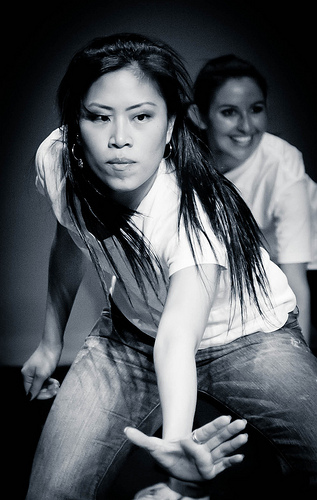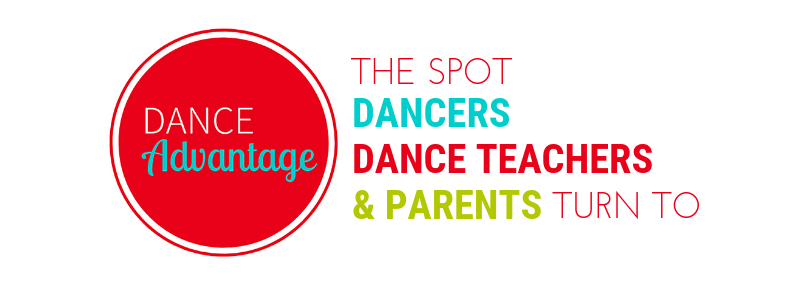The Myth Of More, More, More — No Stone Unturned
There is a lot of pressure on parents to help their child get ahead, as if somewhere down the line a child’s failure to get that job, land that role, or succeed at each endeavor could somehow be traced back to that one stone left unturned in the child’s past. As a result, I see a lot of parents out there trying to turn over every stone along their child’s path. It’s exhausting to watch and even more exhausting to attempt.
In dance, this tendency translates into more money, more time, more classes, more performances, costumes, choreography, private lessons… more, more, more. Even studios feel the need to be everything to everyone, responding to demand and striving to supply. As a result, parents have some big questions on their lips…
How many hours spent at the studio is enough? How many competitions are too many? How much money should it take? How much experience should my dancer have in _____? How much is necessary to ensure that I’ve left no stone unturned?
Because the answers will be different for each family and individual, I’m going to help you answer the above questions for yourself. First, by dispelling some myths about dance training.
Myth:
If my child wants to advance or get ahead he/she needs lots of experiences with different dance styles.
Experience and exposure in a variety of dance styles is important for creating versatile dancers and may even be a necessity for aspiring professionals. Being well-rounded in dance is a good thing. Exposure to different dance forms, starting at a young age, is a great thing. So where’s the myth? It lies in the misplaced emphasis on experience and omission of training. Experience and training are two different things, and I’ll add a third level… exposure. To get ahead, your dancer needs a healthy balance of all three.
Exposure = Watching a variety of dancers, styles, and performances; Making contact with other students and professionals; Reading about dance or dance artists
Experience = Getting a taste of alternative ways of moving and patterning dance; Learning a dance; Participating in a performance; Working with master teachers or choreographers;
Training = Engaging in a course of study that prepares a dancer for the physical, cognitive, and mental requirements of codified dance forms/techniques; specialized practice and instruction over a period of time
When parents see a class that incorporates ballet, tap, and jazz in a single hour class, they may think that this is three times the experience for the price of one. Exposure, yes. Experience, maybe. Training, no.
The child in this situation has less time to develop in any one of these areas and in terms of training, often ends up shortchanged. “Combo” classes, or classes that combine two dance forms are not entirely a bad thing. Young recreational students may benefit from experiencing more than one dance style before deciding where to focus their efforts later. However if, later on, their in-class effort and focus on technique is still only 20 minutes because their hour is continually spent on learning choreography and preparing for performances, the value of their experience is diminished. They are no longer moving beyond the experiencing realm, and no amount of performing, competing, or exposure will make up for this.
Reality:
 One hour of solid, well-thought training in a single dance form is better than ten hours of experience.
One hour of solid, well-thought training in a single dance form is better than ten hours of experience.- Training, whether focusing on ballet, contemporary, jazz, or tap techniques can always be built upon with the addition of other styles.
- An experience can rock your world but it can’t substitute for consistent effort and instruction.
- Good training roots exposure and experience, and allows versatility to flower.
What It Means To Be Well-Rounded
A well-rounded dancer has a balanced education with equal parts exposure, experience, and training.
4 Signs Your Exposure-Experience-Training Balance Is Off
- Preparing a single dance routine requires months of preparation. (Well-trained dancers are prepared for what is given to them, dancers who only have experience under their belt have a steeper learning curve because they must digest and acquire skills as they go.)
- Technique is the add-on in your regimen, while classes like ballet or jazz are spent learning choreography in that style.
- You have lots of exposure but within only a small range of activities. For example, maybe you devour everything about ballet but skip the article on improvisation, or watch major network dance competitions but pass on PBS, or travel every week to competitions but have never seen a live professional performance.
- You engage in tunnel-vision training (yes, a dancer’s balance can be overly focused on training, not allowing for diverse experiences or exposure).
Take some time to evaluate your child’s training. The time spent in additional classes should be relative to true desire and interest. It is important to build your repertoire of dance styles but look for a studio that sticks to the mission of providing an uninterrupted core of technique classes, while offering a chance to “taste” a variety of performance styles and choreography during workshops, via visiting teachers, conventions, and going to see dance performances.
When Is Too Much Not Enough?
As I’ve begun writing this series a theme has emerged. The query above may seem like a riddle but actually it’s not meant to confound and can be answered in many different ways. Through this series, I hope to continue to address this as an underlying question to your concerns about striking balance in your dancer’s study without turning over every stone.
What are other signs that a dance education is not well-rounded?
Can you think of other myths or questions you might have as a parent?
Nichelle Suzanne is a writer specializing in dance and online content. She is also a dance instructor with over 20 years experience teaching in dance studios, community programs, and colleges. She began Dance Advantage in 2008, equipped with a passion for movement education and an intuitive sense that a blog could bring dancers together. As a Houston-based dance writer, Nichelle covers dance performance for Dance Source Houston, Arts+Culture Texas, and other publications. She is a leader in social media within the dance community and has presented on blogging for dance organizations, including Dance/USA. Nichelle provides web consulting and writing services for dancers, dance schools and studios, and those beyond the dance world. Read Nichelle’s posts.


![Reblog this post [with Zemanta]](https://img.zemanta.com/reblog_e.png?x-id=ef868228-be4a-4085-a86e-363429052b56)
